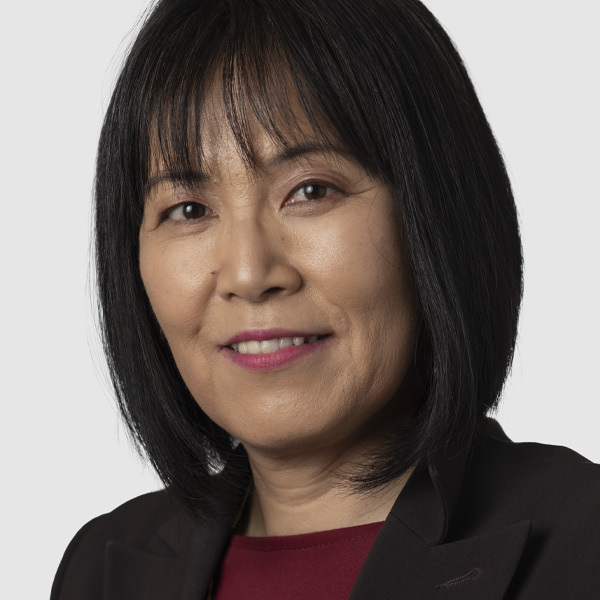Sparked by a combination of low interest rates and a depreciating Yen, rising equity prices, and ambitious government reforms, domestic savers are embracing opportunities to invest in funds via the popular Nippon Individual Savings Account (NISA) scheme and other assets. At the same time, allocations to global asset managers by the country’s sizeable institutional investor segment shows no sign of waning.
We're taking a look at what global asset managers should do to grow their business in Japan.
Japan’s government opens the floodgates
While non-Japanese asset managers already present in Japan are aware of the favorable regulatory developments, those not there yet are just beginning to understand the opportunities at hand.
Announced in late 2023, one of the principle objectives of the recently introduced “Policy Plan for Promoting Japan as a Leading Asset Management Centre” is to channel more of the country’s household savings into investment products.
NISA
To incentivize more retail investment, the government is spearheading a financial literacy drive among the population. It is also reforming the NISA – a government investment account that is somewhat similar to the UK Individual Savings Account (ISA) – by allowing for a lifetime tax exemption on equity NISA eligible investments and increasing the annual contribution limits.1
The government’s plan seems to be working. In the first half of 2024, over three million new NISA accounts were opened, bringing their total to 24 million, while inflows over the same period exceeded 10 trillion Yen, resulting in NISA balances swelling to 45 trillion Yen.2
Increased investment literacy gained through entry products such as NISA would also encourage affluent investors to seek more advisory multi-manager products. The traditional securities companies have been targeting this sub-segment by offering Fund Wrap or face-to-face advisory service offering. An appetite for more multi-manager products would lead Japanese providers to seek out global partners from the US, UK, and Europe to deliver product diversity to their Japanese client base.
On the other hand, the variety of underlying strategies of NISA would be expected to increase in conjunction with the increases of the invested amounts and knowledge levels of the account holders.
iDeCo
As of December 1, 2024, Japan implemented several key changes to the iDeCo (individual-type defined contribution pension) system:
Contribution limits:
The monthly contribution limits are now determined by subtracting the equivalent contribution of any existing defined benefit (DB) pension plan from a base limit of JPY 55,000. This adjustment allows for more personalized contribution ceilings based on an individual's specific pension arrangements.
Withdrawal age:
Participants can now begin withdrawals between the ages of 60 and 75, providing greater flexibility in retirement planning.
Participation eligibility:
Previously, only certain categories of workers could participate, but the system now includes a wider range of employment statuses, such as part-time workers and the self-employed. These reforms are designed to provide individuals across diverse employment types with increased flexibility and inclusivity in managing their retirement savings, accommodating various employment situations and personal financial goals.
Gaining entry into Japan
Global asset managers should consider taking a few practical steps before entering Japan.
1) Understand the regulatory nuances of selling into Japan: Asset managers have three options available to them when looking to distribute onshore.
- Foreign managers must decide what style of marketing they’d like to conduct and what licences are required accordingly. The government has loosened the article 63 requirements, providing wider options such as:
- Type II Financial Instruments Business License
- Type I Financial Instruments Business License
- Without a license and local presence, options include:
- Finding a local distribution partner to market your offshore funds (Cayman Unit Trust, UCITS funds, etc.)
- Finding a local partner who has an Investment Management Business License to set up Japanese ITM funds investing into your offshore funds (“Fund of Funds” structure)
- Setting up Japanese ITM funds and asking the local partner to appoint you as sub-advisor who conducts actual investment activities for the ITM
- Finding a local partner who has an Investment Advisory and Agency Business License to set up an SMA (trust bank account) investing into your offshore funds
- Setting up an SMA (trust bank account) and asking the local partner to appoint your firm as sub-advisor who conducts actual investment activities for the SMA
Managers have support frameworks available to them3. They can also take an intermediate approach and use the FSA-operated Financial Market Entry Office (FMEO). The FMEO handles - in English - the regulatory process from pre-application consultation, registration, right through to supervision after registration on behalf of asset managers who are new to Japan.4
2) Pay attention to the Emerging Manager Program (EMP): As part of its policy plan, Japan’s government has asked domestic financial institutions and asset owners to avoid excluding emerging managers from their asset allocation pools simply because they lack a measurable investment track record.
Since the announcement was made, several high profile Japanese financial institutions, including Nomura Holdings5, SuMi Trust6, and Mitsubishi7, have publicly said they will ramp up their emerging manager allocations. Emerging managers should consider using the EMP route to raise funds.
Although it is outside of EMP, the Government Pension Investment Fund (GPIF) has already removed AUM requirements for asset manager selection to broaden access, support emerging managers, and enhance returns, reflecting a shift toward encouraging Japanese asset owners to include smaller managers in their portfolios.
3) Promote the right product to target segments: Understanding what investors of all stripes want to buy is key. While traditional funds are likely to be more popular among Japan’s retail investors, the asset owners make allocations to alternative strategies, including some limited allocations to hedge funds. Increasingly, private market products such as real estate, private debt, and infrastructure have been discussed due to their long only nature.
Foreign managers should be aware that Cayman Unit Trust remains a popular structure in Japan partially due to the preference of Unit Trust over company structure. To some extent, Cayman is indeed chosen based on past precedence and familiarity. Foreign mangers and legal advisers working for Japanese managers and asset owners should also provide clear comparisons of the benefits in different jurisdictions depending on underlying assets.
4) Identify distribution partners: In order to attract retail money in Japan, foreign asset managers need to build up robust distribution networks through a combination of securities companies, banks, insurers, and local asset management companies. Finding the right distribution partners is therefore critical.
Making sure that the fund buying process is as seamless as possible is equally vital. NISA’s low-cost structure and the growing influence of online brokers means that managers need to cater to the digital requirements of tech-savvy younger people.
5) Get the pitch right: Japan is a unique market, so fund managers need to differentiate their products and services if they are to win mandates from the country’s asset owners. When targeting retail customers, however, asset managers should adopt a more proactive marketing approach and create a positive story around their products.
Barriers to entry
While industry’s ecosystem is more open for non-Japanese asset managers, there are still some lingering challenges.
One source of frustration is the country’s continued business custom on having double-sided NAV calculations for Japan domiciled funds by asset managers and asset servicing entities, instead of the more conventional single check NAV calculation. Under this set-up, an asset manager and their fund administrator must generate, match, and agree a NAV on a daily basis, a practice which can be incredibly time consuming and costly.
Experts in the industry and Japanese government agree that embracing single NAV calculation, a default method in developed countries, would be an improvement in the Japanese funds industry, and make it easier for foreign managers when accessing the country. There will be always an option to automate secondary back-up NAV calculations.
Meticulous attention, time zone, and language
Asset managers will need to consider the country’s meticulous attention to details, rigid time sensitivity, and specific reporting requirements in Japanese defined by the country or the company. Therefore, day-to-day operations of the funds such as NAV calculation, cash positions, and FX hedging calculations should have zero errors.
Going forward in Japan
While numerous managers have long standing investors from the Japanese market, recent policy changes have led to renewed interest. Selling into Japan is as much an art as it is a science, so firms need to give a lot of thought to refining their distribution strategy before entering the country.
1 FT Advisor – March 5, 2024 – How are Japanese investors changing?
2 Promoting Japan as a Leading Asset Management Center, August 2024
3 https://www.fsa.go.jp/internationalfinancialcenter/en/our-support/our-partners/#:~:text=The%20Financial%20One-Stop%20Support%20Service%20works%20with%20FSA,wish%20to%20establish%20a%20finance-related%20business%20in%20Tokyo
4 Financial Services Agency – The Financial Market Entry Office
5 Nomura – June 10, 2024 - Nomura to Provide Emerging Managers Program (EMP)
6 https://www.smth.jp/english/-/media/th/english/news/2023/E231222-2.pdf
7 MUFG – May 15, 2024 - MUFG to Establish Investment Facility for Emerging Managers Program
Brown Brothers Harriman & Co. (“BBH”) may be used to reference the company as a whole and/or its various subsidiaries generally. This material and any products or services may be issued or provided in multiple jurisdictions by duly authorized and regulated subsidiaries. This material is for general information and reference purposes only and does not constitute legal, tax or investment advice and is not intended as an offer to sell, or a solicitation to buy securities, services or investment products. Any reference to tax matters is not intended to be used, and may not be used, for purposes of avoiding penalties under the U.S. Internal Revenue Code, or other applicable tax regimes, or for promotion, marketing or recommendation to third parties. All information has been obtained from sources believed to be reliable, but accuracy is not guaranteed, and reliance should not be placed on the information presented. This material may not be reproduced, copied or transmitted, or any of the content disclosed to third parties, without the permission of BBH. All trademarks and service marks included are the property of BBH or their respective owners.© Brown Brothers Harriman & Co. 2025. All rights reserved. IS-10445-2025-01-16



